Growing irises: the main rules and secrets
It is no coincidence that fragile and delicate irises got their name in honor of the goddess of the rainbow: these flowers surprise with the richness of colors and variety of appearance. In total, there are more than 250 types of irises, of which at least 20 are actively cultivated in Russia. They attract experienced flower growers not only with their cute appearance, but also with unusual flowering times. They seem to fill the gap between spring and summer flowers and are perfect for those who always want to see a blooming garden. With all the external fragility, these are unpretentious plants, and the cultivation of irises on the site does not require much work.
Content:
- General description and varieties of irises
- Requirements for growing root irises
- Planting root irises: rhizome propagation
- Root iris care
- Rules for the care of bulbous irises
- What type of iris to choose for the site
General description and varieties of irises
Not everyone knows, then under the name "iris" hides immediately three types of plants: these are common root irises and bulbous varieties, which are also divided into several groups.
These include Juno, Xyphium, and Iridodictum. For planting in flower beds, root irises are often chosen, which are often called "cockerels" or "Iris".
The most common variety of irises is the bearded cockerel.
- They received such an unusual name because of the special shape of the flower, which really somewhat resembles a head with a comb.
- Bearded irises are the most unpretentious variety, but far from the only one.
- Dwarf, blue, Japanese irises are also popular, and there are even more bulbous varieties.
- Breeding work continues now, therefore, perhaps in the future, new interesting varieties will begin to appear.
All rhizome irises have xiphoid flat leaves growing in the lower part of the peduncle on the stem of the leaves. There may be several peduncles, at the end of spring, large single flowers with a pleasant aroma appear on them. Each flower has 6 petals, which can have a wide variety of colors. The lower petals go down, and they may differ in color from the upper ones.
When the petals crumble, a fruit-box with seeds is formed on the peduncle, which are used for selective propagation of the flower.
According to the color of the petals, irises are divided into one-color, two-color, two-tone, edged and iridescent. The last variety has a very unusual color, in which one tone seems to shimmer into another. Graceful yet modest irises can turn into the perfect decoration for the site.
Requirements for growing root irises
Root and bulbous irises differ in their requirements for growing conditions:
- Bulbous varieties are more fond of warmth and sunlight, and it is more difficult for them to organize an ideal environment for long flowering.
- Root irises are less whimsical, and it is much easier for them to find a place on the site.
This type of plant has the following requirements for the place and growing conditions:
- The soil should not be too dense.In order for the irises to grow well, peat and sand must be added to the soil, the mixture is thoroughly mixed with a shovel.
- On acidic soils, irises give leaves, but in this case they will not bloom.
- In this case, it is necessary to bring ash into the ground or otherwise neutralize excess acidity.
- It is desirable to provide a drainage layer in the soil, since root rot is a common disease of irises.
- At the same time, iris - moisture-loving plant, so you will have to water it often. The ground should always be slightly damp.
- Root iris is a light-loving plant, but it does not like extreme heat. In southern regions with a warm climate, it is quite possible to grow it in the shade, while it will feel great and will give large flowers at the set time.
- Excess sun, on the other hand, can damage the leaves and lead to shedding of the petals.
- Fertilizers will need to be applied to the soil about a week before planting. The main type is nitrogenous fertilizers, which must be applied to depleted soil. In this case, the amount of feeding should not be excessive.
Special requirements apply to the planting material. If you have taken a young root sludge from a bulbous plant, they must not be wrapped in plastic or in a wet cloth before planting. The roots start to rot very quickly, so they should just be kept loose before planting.
It is no coincidence that the strongest and thickest rhizomes are chosen for planting: they have more nutrients, and the plant will calmly transfer the transplant to a new place.
Planting root irises: rhizome propagation
Vegetative propagation is used most often, since it is much less laborious than growing from seeds, it allows you to achieve the desired result faster. The next year after transplanting, the plant will begin to bloom. As planting material delenki are used - this is the name of the one-year-old rhizomes from which the lower leaves are cut. Delenki are harvested after the summer flowering time ends - usually in early July. This is the best time for plant propagation.
Delenki is recommended:
- It is imperative to dig it out every 3-5 years, since in unkempt areas the plant will quickly begin to form a dense carpet.
- At the same time, the flowers will become smaller.
- The dug out rhizome is freed from dry and diseased leaves, in addition, you need to carefully examine the root.
- If it partially begins to rot, all affected areas must be removed as soon as possible.
- At the same time, the place of the cut must be covered with a mixture of sulfur and crushed coal - this will protect the root from further spread of the disease.
Planting material is kept in a weak solution of potassium permanganate before being placed on the garden bed: this is an additional protection against rot, it will help the rhizome to better take root in a new place.
Parts of the rhizome in the garden are placed about 40 cm apart from each other, so that he would have enough room to grow... The earth is dug to the depth of the bayonet, after which the rhizomes can be placed in the garden bed. Planting material is placed only vertically, while the kidney should remain at surface level. Do not plant the plant too deeply, all remaining leaves should be completely on the surface and be vertical.
Root iris care
Iris - perennial, which requires regular, but not at all burdensome maintenance:
- Immediately after planting, the plants need to be watered well, and the next watering is carried out at least three days later.
- At first, before the root system grows, it is necessary to protect the irises from weeds: they are carefully pulled out with their hands there so as not to damage the root of the cultivated plant.
- The soil must be loosened very carefully, parts of the rhizome will be located close to the surface.
- After the roots have grown enough, it will not be necessary to loosen and weed the garden bed, since the weeds can no longer damage the flowers.
Iris requires care at regular intervals, these rules will help you provide the best conditions for it, and the result will delight you with beautiful large flowers:
- Mineral fertilizers should be applied to the soil three times: at the very beginning of spring, during the flowering of irises and another month after its completion.
- Fertilizers are applied only into the dried soil in the required amount.
- Once every two weeks, irises are sprayed from pests. This plant can be attacked by thrips, which eats leaves. They become weak and depressed, wax deposits disappear from them. Special protection will keep the green mass free from pests, moreover, this is not a very common attack.
Plants suffer from diseases much more often, among which rhizome rot remains the most common.
If the root begins to rot, it must be removed from the soil, removed the damaged areas and treated with the "Hom" preparation. After processing, the iris root is dried for 12 hours in the open air. The most common cause of rot is waterlogging of the soil. Do not over-water, and a layer of sand under the bed will help drain excess water away from the roots.
A common disease is gesteosporosis, which affects the leaves of the plant.
Small brown spots begin to appear on them, especially towards the end of summer. Each affected leaf must be cut off, and then the whole plant is treated with copper sulfate in the amount of 50 grams. for 5 liters of water. In winter, plants must be covered from the cold with leaves, especially for delicate varieties. With the beginning of spring, as soon as the snow melts, the "veil" is removed so that the plant has time for the appearance of leaves and flowering.
Rules for the care of bulbous irises
The cultivation of bulbous irises is somewhat more difficult, since they are more demanding on both the lighting mode and the amount of moisture. They need a sunny place, periodic abundant watering and fertile soil - this will provide plants with fast flowering with large buds. Juno remains the most unpretentious type of bulbous irises - it can grow even on stony soils, but it definitely needs a sunny side.
Bulbous irises bloom for about two months: the first buds will appear in mid-May, and flowering will end at the end of June.
After that, the bulbs are dug up. If, after flowering, they are left in the garden, the bulbs will suffer from fungal diseases and will be unusable. After digging up, they are treated with a weak solution of potassium permanganate and dried well. This is planting material that must be stored until September.
In September or at the very beginning of October, the bulbs are planted in the ground, after which they are covered for the winter. After wintering with the beginning of spring, they will quickly begin to sprout again. After such a cycle, you can expect real large buds that will turn into a garden decoration.
The bulbs are planted about 5 cm from the soil surface.
Bulbous plants require more care than rhizomatous plants, as they do not like weeds and are afraid of pests. With proper handling and care, bulbous iris takes root well and does not cause any difficulties for a novice gardener. If the stalks become too tall, they must be tied up so that they do not break under their own weight.
What type of iris to choose for the site
Since there are many types of irises, many novice gardeners get lost and don't know what to choose. If you are not satisfied with the usual bearded iris with blue flowers, you can decorate your garden with the following exotic species:
- Yellow Queen is a variety of bulbous iris, which is classified as iridescent due to its special color. The basic tone of the bud is yellow, but it differs significantly on the lower and upper petals.
- Vinogradov's Iridodictium is an interesting bulbous variety, with white petals covered with an interesting dotted pattern. It will look unusual in the garden, and at the same time it is not particularly demanding to care for.
- Juno Bukhara is a plant with narrow petals and two-colored white-yellow buds. This plant looks amazingly graceful, it is one of the most fragile and exotic varieties.
These are just a few of the unusual types of irises to plant. It will not be difficult for iris to create comfortable conditions, they can grow even with moderate watering.
If you try to propagate irises by seeds, you can get the most unusual colors of buds - your own breeding work can become the real pride of the owner of the site.
More information can be found in the video.



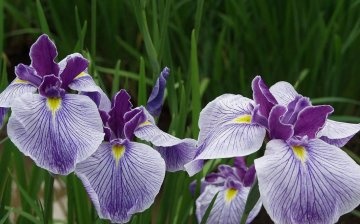
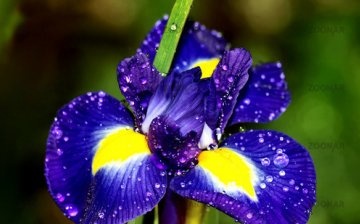
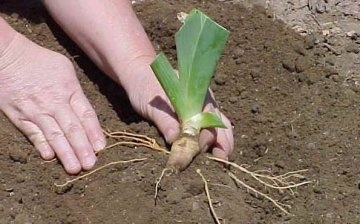
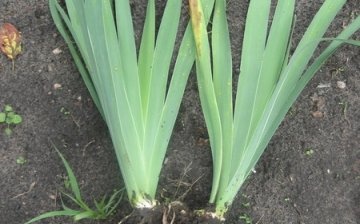
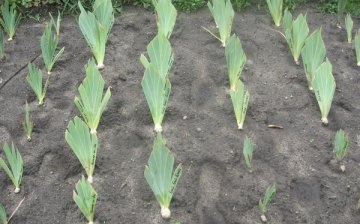
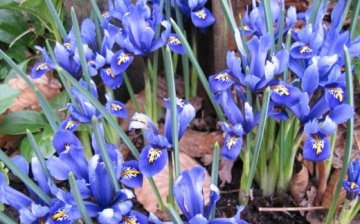
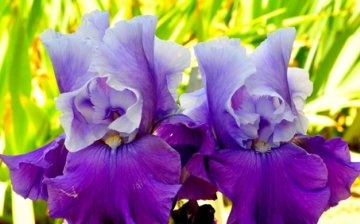







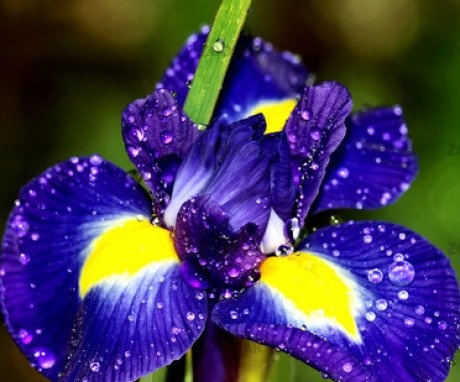
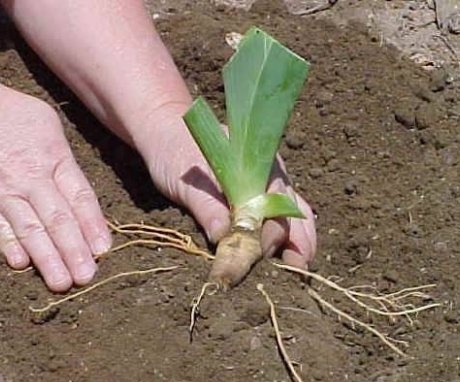
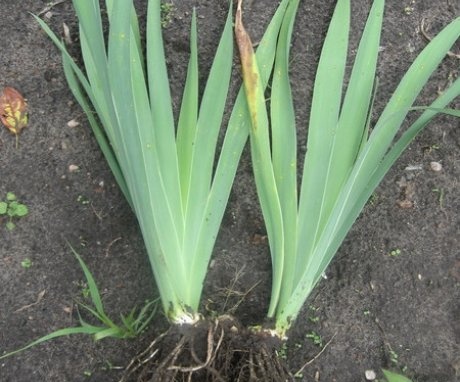
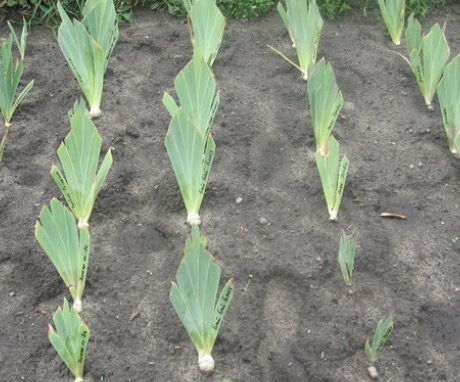
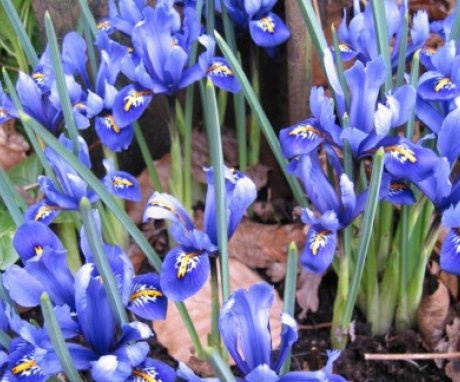
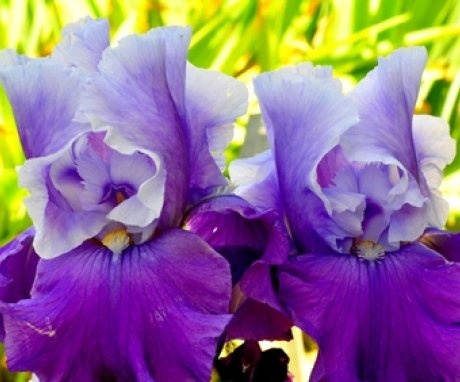
I grow ordinary root irises, but it's a pity that they quickly fade. Maybe there are some secrets for flowering duration?
Iris is a rhizome plant, not a root plant. The difference between root and rhizome is significant. Many varieties of bearded irises have 2 flowers on a peduncle.